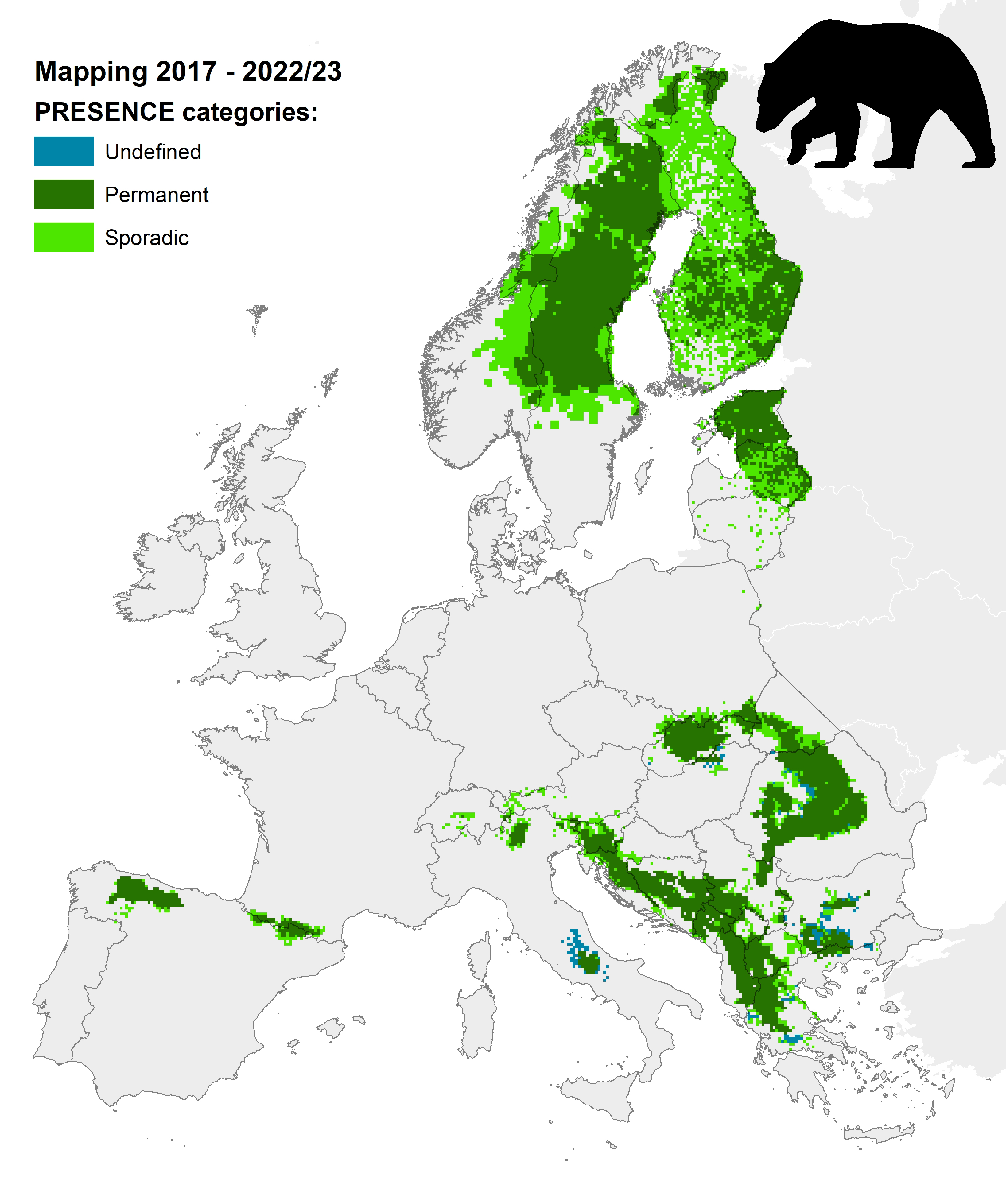Threats:
(1) Some populations are very small and isolated. It is unsure if these are viable in the long term from the points of view of both numbers and genetics. Population supplementation may be necesary - for example like in the French Pyrenees.
(2) In many parts of the large populations bears are harvested by hunters or subjected to lethal control as a conflict prevention strategy. In these areas it is important that quotas are kept within the limits of sustainability.
(3) Depredation on livestock is common throughout Europe. Effective mitigation measures need to be encouraged and applied wherever bears occur.
(4) In many places roads are being built through bear habitat, which can fragment populations and increase mortality. There is also an increase in energy infrastructure (especially windparks) being built in bear habitat. It is important that new infrastructure development takes wide ranging species into account and incorporate mitigation structures (tunnels, green bridges) and sensitive habitats into their plans.
Distribution:

Distribution maps 2012-2016 available from Data Dryad and 2017-2022/23 available from Data Dryad.
Status:
20.400 in Europe (Source: LCIE Status Assessment 2017-2022/23)
10 populations
|
Population name
|
Countries
|
Size
(2017-2022/23)
|
Trend
|
|
Scandinavian
|
Norway, Sweden
|
3000
|
Stable
|
|
Karelian
|
Norway, Finland
|
2175
|
Increase
|
|
Baltic
|
Estonia, Latvia
|
1090
|
Increase
|
|
Carpathian
|
Romania, Poland, Slovakia, Serbia
|
9000
|
Increase
|
|
Dinaric-Pindos
|
Slovenia, Croatia, Bosnia & Herzegovina, Montenegro, North Macedonia, Kosovo*, Albania, Serbia, Greece
|
4112
|
Stable
|
|
Alpine
|
Italy, Switzerland, Austria, Slovenia
|
100
|
Increase
|
|
Eastern Balkan
|
Bulgaria, Greece, Serbia
|
460
|
Stable
|
|
Central Apennine
|
Italy
|
50
|
Stable
|
|
Cantabrian
|
Spain
|
324
|
Increase
|
|
Pyrenean
|
France, Spain
|
86
|
Increase
|